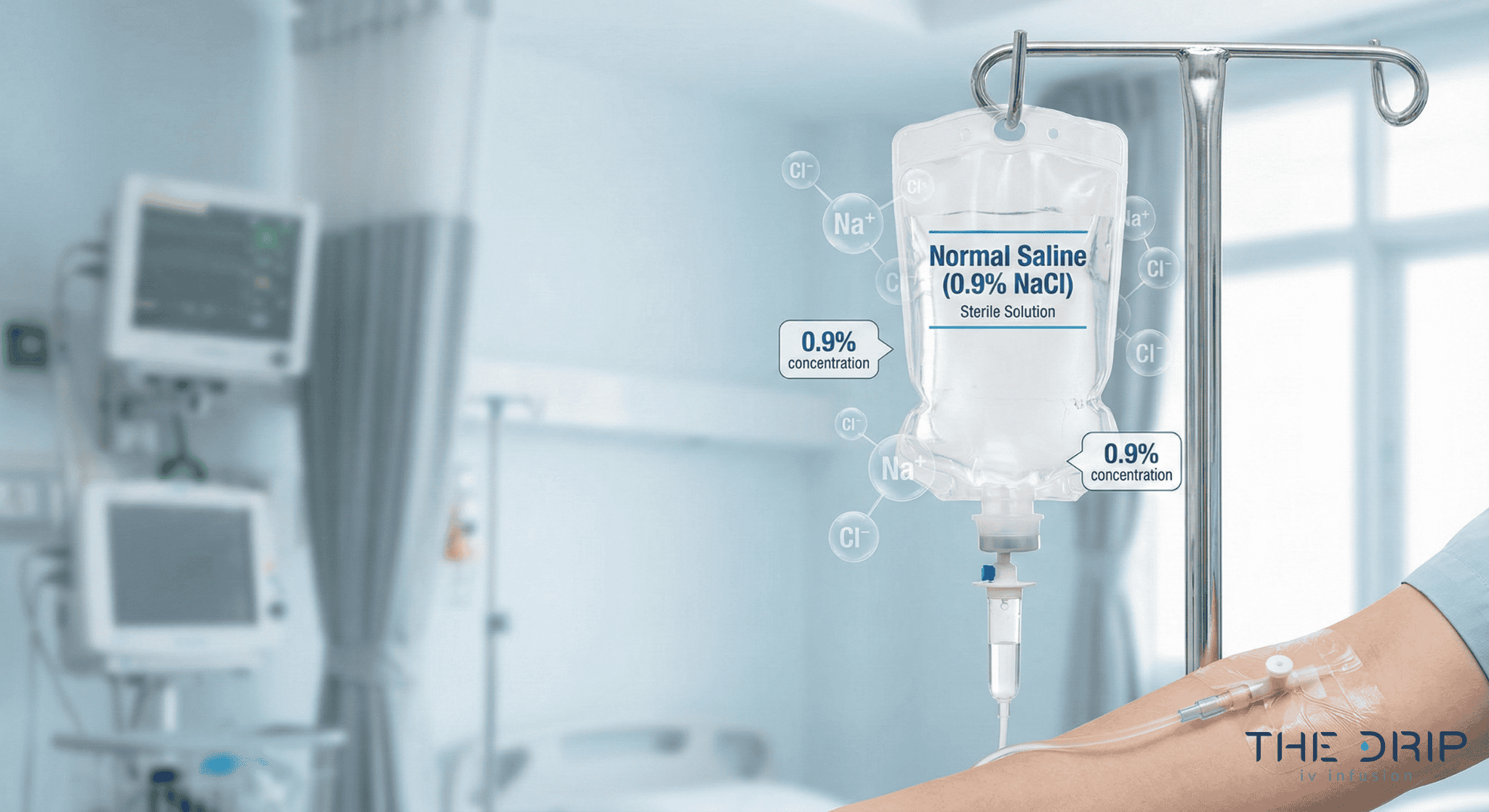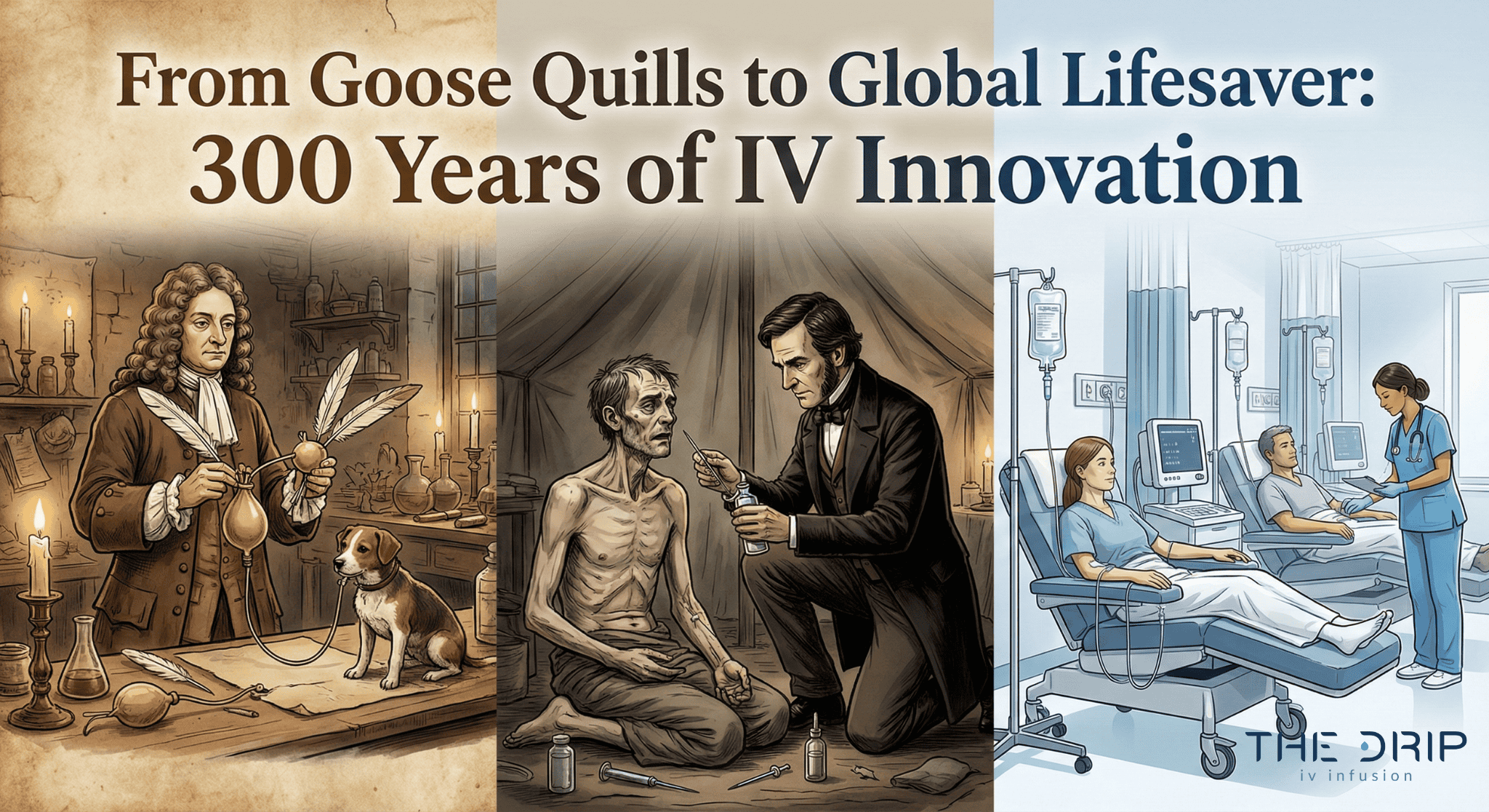If you’re looking up IV fluid types, chances are you’re worried about medical treatment for yourself or someone you care about, or maybe you’re a healthcare worker who needs the full scoop. We get it – trying to wrap your head around all this IV stuff can feel pretty overwhelming, but you’ve landed in the right spot for clear, straight-up answers about the different IV fluids out there and what they actually do.
IV fluids are basically sterile liquid solutions that doctors pump straight into your bloodstream through a vein to get your fluid levels back on track, deliver medications, give you nutrition, or fix electrolyte problems. Think of it like topping off your car’s fluids, but way more precise. In 2024, the global IV solutions market hit USD 13.9 billion and is expected to jump to USD 22.0 billion by 2030, with more than 5 million patients admitted to U.S. intensive care units every year needing IV fluid therapy.
TL;DR Summary:
- Isotonic IV fluids (0.9% saline, Lactated Ringer’s, Plasma-Lyte) match your body’s fluid levels and are used when you’re seriously dehydrated from blood loss, infection, or not drinking enough
- Hypotonic IV fluids (0.45% saline, 0.225% saline) have less stuff dissolved in them and help when your sodium levels are too high
- Hypertonic IV fluids (3% saline, 10% dextrose) are super concentrated and fix dangerously low sodium that’s messing with your brain
- Picking the right fluid depends on what’s going wrong with you – doctors look at your blood pressure, heart rate, and lab results to decide
- Medical pros follow guidelines that say you need about 25-30 mL/kg/day of water and 1 mmol/kg/day of electrolytes to keep things running smooth
- The Drip IV Infusion offers specialized IV therapy services with expert help on picking the right fluids for different wellness and recovery needs
Quick Tip: Keep an eye on how much you’re peeing when getting IV fluids – healthy adults should make at least 0.5 mL/kg/hour, which is a simple way to tell that your kidneys are handling the fluids properly and helps prevent both getting dried out and getting too much fluid.
What Are Isotonic IV Fluids and When Are They Used?
Isotonic IV fluids are solutions that match the concentration of stuff dissolved in your blood plasma – usually around 275-295 mOsm/kg. These fluids boost your blood volume without making fluid slosh around between different parts of your body. Doctors reach for isotonic fluids when you need emergency rehydration from things like severe dehydration, bleeding, serious infections, or just plain not drinking enough.
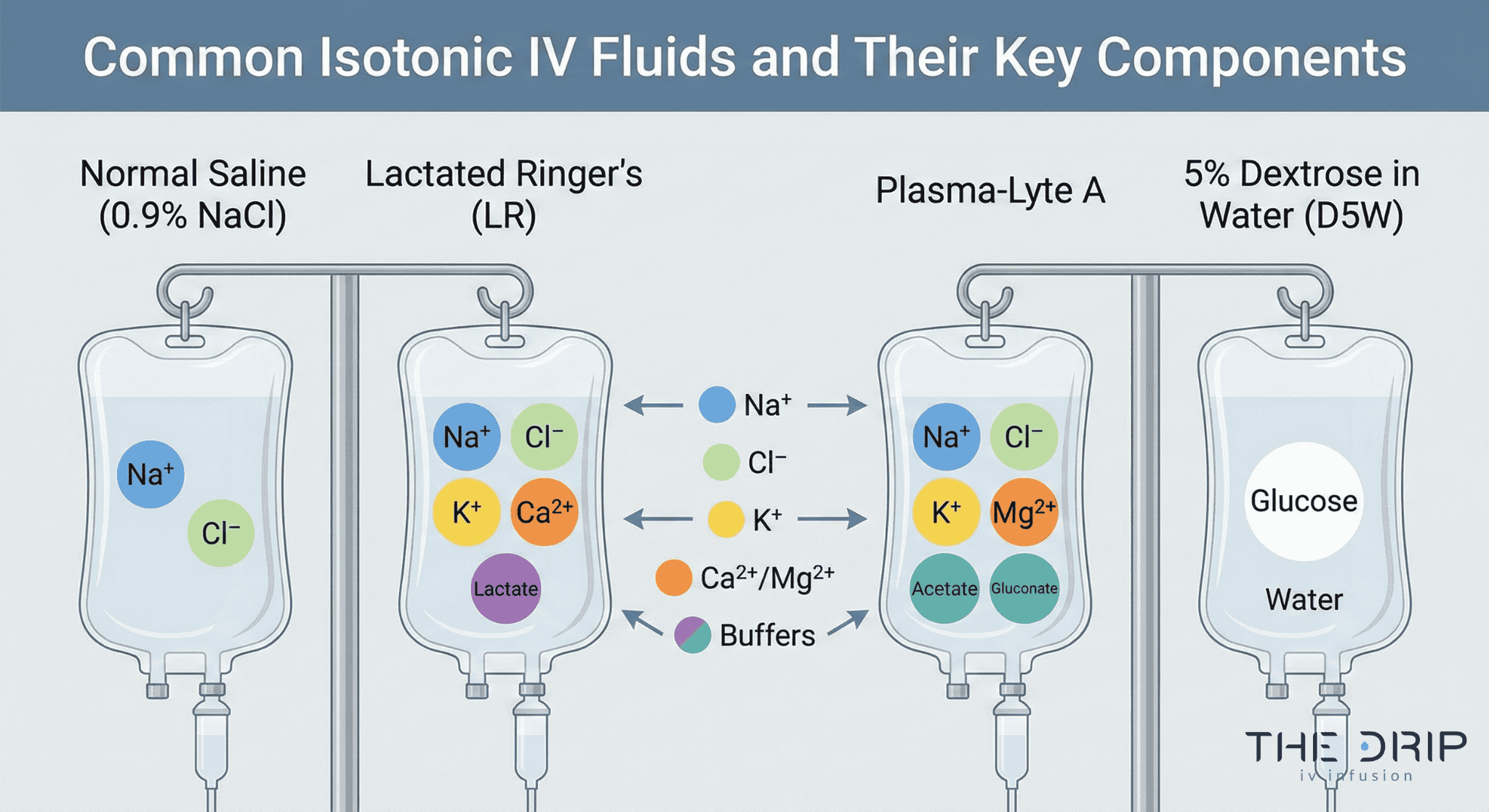
How Do Isotonic IV Fluids Function in the Body?
Isotonic IV fluids work by pumping up your blood volume without messing with the balance of ions floating around in there. These solutions have about the same concentration of dissolved stuff as your plasma, so they don’t create weird pressure effects in your body. Your normal plasma has 275-295 mOsm/kg of dissolved particles, with sodium and chloride making up about 80% of what’s hanging out in your blood and the spaces around your cells.
This balanced mix keeps fluid from jumping around between your cells, blood vessels, and the spaces in between. It’s like keeping everything at the same pressure so nothing gets squeezed or stretched while getting your circulation back on track.
What Are Common Examples of Isotonic IV Fluids?
The common go-to isotonic IV fluids are normal saline, Lactated Ringer’s, Plasma-Lyte, and 5% dextrose in water.
| Fluid Type | Key Components | Total Concentration |
| 0.9% NaCl (Normal Saline) | 154 mmol/L Na, 154 mmol/L Cl | 308 mmol/L |
| Lactated Ringer’s | 130 mmol/L Na, 109 mmol/L Cl, 4 mmol/L K, 3 mmol/L Ca, 28 mmol/L lactate | ~273 mmol/L |
| Plasma-Lyte | 140 mmol/L Na, 98 mmol/L Cl, 5 mmol/L K, 3 mmol/L Mg, acetate/gluconate buffers | ~294 mmol/L |
| 5% Dextrose in Water | 50 g dextrose in 1 L H2O | 252 mmol/L |
Acetate buffered solutions are FDA-approved sodium sources for fixing low sodium problems. Your liver breaks down lactate and gluconate into bicarbonate, while your muscles mostly handle the acetate. Each solution does its own thing depending on what electrolytes your body is crying out for.
When Might Healthcare Providers Choose Isotonic IV Fluids?
Doctors pick isotonic IV fluids when you need serious fluid rescue from dehydration, bleeding, sepsis, and just being dried out. The big sepsis guidelines say you need at least 30 mL/kg of IV fluid in the first 3 hours, with a quick 20 mL/kg blast in the first 30 minutes. The official rules say to use fluids with 130-154 mmol/L sodium for emergency situations, given as 500 mL shots in less than 15 minutes.
Real-world results show these isotonic fluids actually work. In a huge study of 15,802 ICU patients, balanced fluids caused fewer kidney problems – 14.3% versus 15.4% with plain saline. Another big review from 2018 found that balanced fluids led to fewer deaths than normal saline in patients who didn’t have brain injuries. Sepsis patients had a 30-day death rate of 25.2% with balanced fluids versus 29.4% with saline.
They’re aiming for a central venous pressure of 8-12 mm Hg during treatment. These proven methods help doctors pick the right isotonic fluid to get the best results, setting the stage for dealing with other fluid problems where getting water into cells becomes the main goal.
What Are Hypotonic IV Fluids and How Are They Utilized?
Hypotonic IV fluids are solutions with less dissolved stuff than your blood plasma – usually under 275 mOsm/L. These fluids push water from your blood vessels into your cells through a process that’s like water always trying to even things out. They’re crucial for treating when your cells are parched and certain electrolyte imbalances. Let’s dig into how hypotonic fluids mess with your fluid balance, what medical problems they fix, and what can go wrong.
How Do Hypotonic IV Fluids Affect Fluid Balance?
Hypotonic IV fluids affect your fluid balance by encouraging water to move into cells where there’s more concentrated stuff hanging around. Half-normal saline (0.45% NaCl) has 77 mmol/L sodium plus 77 mmol/L chloride, adding up to 154 mmol/L total. Quarter-normal saline (0.225% NaCl) has even less – just 38.5 mmol/L sodium plus 38.5 mmol/L chloride, totaling 77 mmol/L.
Water makes up about 70% of your total body weight if you’re an adult. You need 2-3 liters every day just to make up for all the water you lose through breathing and your skin. Hypotonic solutions replace this water shortage while keeping your sodium load low.
| IV Fluid | Measured Parameter | Quantitative Value |
| 0.45% NaCl | Sodium concentration | 77 mmol/L |
| 0.45% NaCl | Total osmolality | 154 mmol/L |
| 0.225% NaCl | Sodium concentration | 38.5 mmol/L |
| 0.225% NaCl | Total osmolality | 77 mmol/L |
| Adult body | Water percentage | 70% |
| Adult daily requirement | Water volume | 2-3 L/day |
These solutions spread water throughout your body compartments, fixing dried-out cells while avoiding dumping too much sodium on you.
What Medical Conditions Require Hypotonic IV Fluids?
Medical problems that need hypotonic IV fluids include high sodium levels and regular maintenance fluid therapy. When your sodium gets too high, doctors use hypotonic fluids like 5% dextrose in water or 0.45% NaCl to slowly bring those sodium levels back down. The FDA gives the thumbs up to 0.45% NaCl specifically for replacing fluid and sodium chloride.
Conditions that call for hypotonic fluid treatment:
- High sodium levels above 145 mmol/L
- Free water shortage from diabetes insipidus
- Super high blood sugar situations
- Maintenance therapy for people who need to watch their sodium
Healthcare providers figure out how much free water you’re missing and give hypotonic solutions at controlled speeds to prevent your sodium from dropping too fast. Choosing between 0.45% saline and dextrose solutions depends on your current blood sugar levels and how much sodium correction you need.
Are There Risks Associated with Hypotonic IV Fluids?
The risks with hypotonic IV fluids mainly center on brain problems from electrolytes shifting around too fast. If you fix high sodium too quickly, you can get brain swelling as water rushes into brain cells too fast. This creates dangerous pressure inside your skull.
Hypotonic fluids come with several additional risks beyond brain swelling. These side effects occur when water moves too rapidly into cells or electrolytes shift unpredictably. Here are the main additional complications physicians watch for:
- Low sodium from giving too much hypotonic fluid
- Cells swelling and potentially bursting in severe cases
- Worsening of existing brain injuries
- Breakdown of red blood cells if infused too quickly
Doctors need to check your electrolytes frequently and control how fast the IV drips. Sodium correction shouldn’t go faster than 10-12 mmol/L in 24 hours to prevent brain complications. Understanding these hypotonic fluid risks keeps things safe while still getting your cells the hydration they need for specific medical conditions.
What Are Hypertonic IV Fluids and in What Situations Are They Beneficial?
Hypertonic IV fluids are solutions packed with more dissolved stuff than your blood plasma – usually over 295 mOsm/kg. These super-concentrated solutions suck water out of cells and into your blood vessels, kind of like a really strong sponge.
Medical teams use hypertonic fluids for emergency replacement of blood chemicals, especially when your sodium is dangerously low and it’s messing with your brain. The main trick here is moving fluid from inside cells to outside them.
How Do Hypertonic IV Fluids Work in the Body?
Hypertonic solutions have way more dissolved stuff than your blood normally does. These solutions create pressure differences that pull water from cells into your bloodstream. The main reason to use them is emergency replacement of blood chemicals, like treating low sodium when it’s causing brain symptoms.
Water moves across cell walls toward the area with more concentrated stuff. This mechanism quickly fixes electrolyte problems while shrinking the amount of fluid inside cells.
What Are the Main Types of Hypertonic IV Fluids?
The main types of hypertonic IV fluids are 3% sodium chloride, 10% dextrose, and bicarbonate solutions. 3% NaCl contains 513 mmol Na + 513 mmol Cl = 1026 mmol/L total. 10% dextrose in water gets FDA approval as a source of water and calories.
Bicarbonate solutions mix 3 ampules NaHCO3 in 1 L 5% dextrose = 300 mmol/L. Each solution tackles specific clinical needs based on what electrolytes your body is screaming for.
What Precautions Should Be Taken with Hypertonic IV Fluids?
Hypertonic solutions (3% NaCl) can cause water to rush out of cells, leading to brain swelling. Fixing low sodium too fast can cause a scary condition called osmotic demyelination syndrome. Healthcare providers have to check your blood chloride levels daily if you’re getting IV fluids with chloride levels over 120 mmol/L.
You need a central line to get these because they’ll irritate regular veins. How fast they drip needs careful math to avoid overcorrecting things. Regular brain checks catch early signs of trouble. These safety steps make sure hypertonic fluid treatment stays safe while avoiding serious bad stuff.
How Do Hypotonic and Hypertonic IV Fluids Compare?
Hypotonic and hypertonic IV fluids are like opposite ends of a seesaw – each doing completely different things to move water around in your body. Hypotonic solutions have fewer dissolved particles than your blood, while hypertonic solutions are packed with more stuff than your plasma normally has. Getting the hang of their differences helps doctors nail down precise fluid management when you’re really sick.
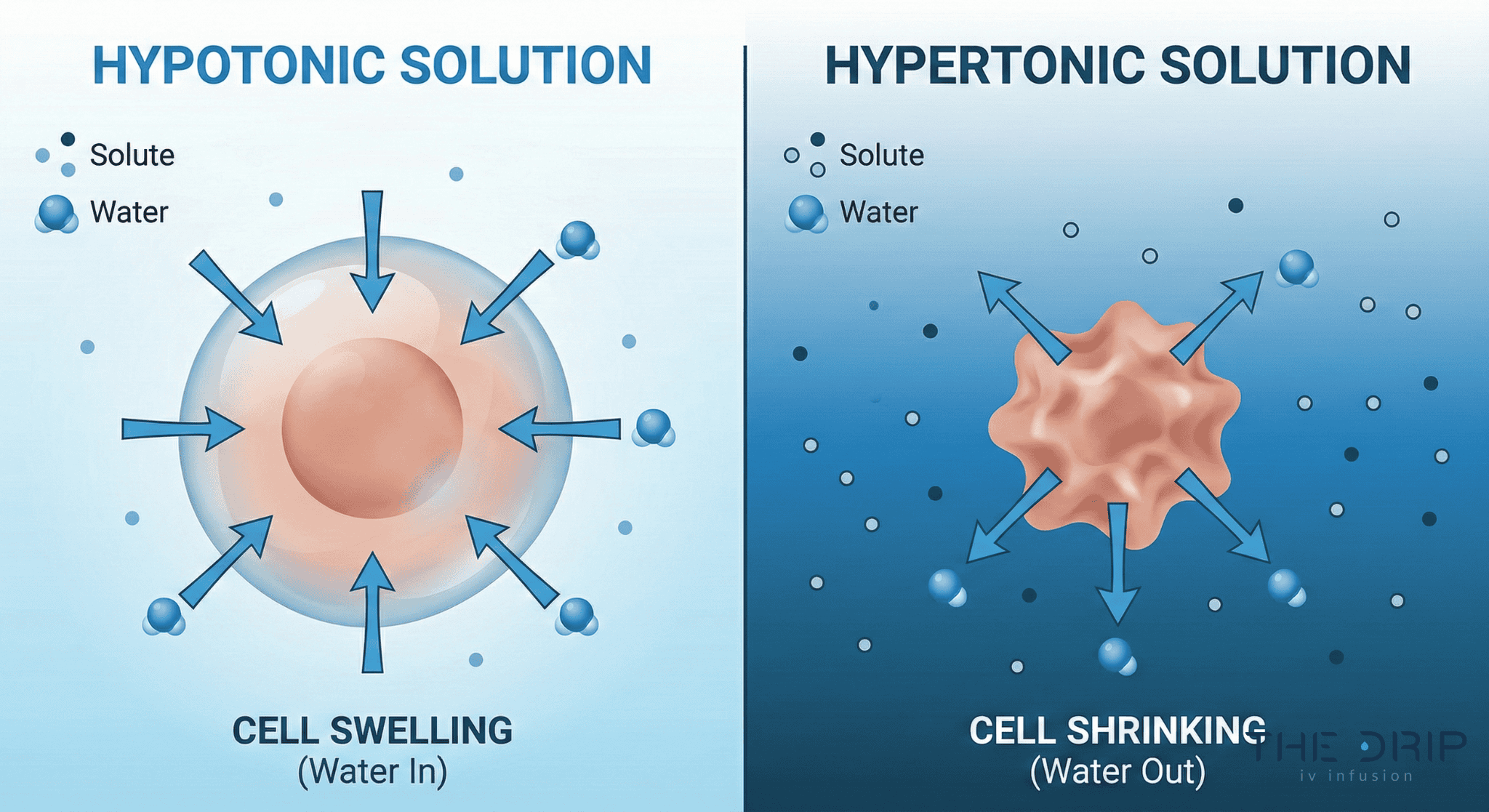
What Are the Key Differences Between Hypotonic and Hypertonic IV Fluids?
The big differences between hypotonic and hypertonic IV fluids are how much stuff is dissolved in them compared to your blood and how they make water move in opposite directions. Hypotonic solutions have less dissolved stuff than your plasma (under 275 mOsm/kg), making water flow into cells. Hypertonic solutions are super concentrated with more dissolved stuff than your plasma (over 295 mOsm/kg), pulling water out of cells into your blood vessels.
These opposite effects create totally different reactions in your body. Hypotonic fluids like 0.45% NaCl (154 mOsm/L) hydrate your cells by making the fluid around them less concentrated. Hypertonic fluids such as 3% NaCl (1026 mOsm/L) dehydrate cells while rapidly expanding the blood volume.
How big the concentration difference is determines how fast and in what direction fluid moves. Bigger differences mean faster fluid shifts, so you need careful watching to prevent complications.
In Which Scenarios Should One Be Used Instead of the Other?
Low sodium gets treated with normal saline (0.9% NaCl) or super-concentrated saline (3% NaCl) depending on how bad it is and whether it’s messing with your brain. Really bad low sodium with seizures or confused thinking needs 3% NaCl for emergency sodium replacement. Mild low sodium without symptoms responds to normal saline with gradual correction.
High sodium needs hypotonic fluids to gradually bring sodium down. Treatment uses 0.45% NaCl or 5% dextrose in water to lower blood sodium by 0.5 mEq/L per hour, preventing rapid shifts that cause brain swelling.
How urgent things are determines which fluid to pick. Life-threatening low sodium demands hypertonic solutions for immediate fixing, while long-term high sodium needs slow hypotonic replacement over 48-72 hours. Choosing between hypotonic and hypertonic solutions depends on your sodium levels, how bad your symptoms are, and how fast things need to be corrected.
What Are the Possible Side Effects When Comparing Both Types?
Hypotonic fluids risk brain swelling through too much cell hydration, especially with fast administration in people with normal sodium levels. Hypertonic solutions cause cell dehydration and a nasty condition called osmotic demyelination syndrome when fixing low sodium too quickly – especially beyond 12 mEq/L in 24 hours.
| Fluid Type | Primary Risk | Mechanism | Prevention Strategy |
| Hypotonic | Cerebral edema | Cell swelling | Slow infusion rates |
| Hypertonic | Osmotic demyelination | Rapid sodium shifts | Limit correction to 8-10 mEq/L/day |
| Hypotonic | Hyponatremia | Dilutional effect | Monitor serum sodium q4-6h |
| Hypertonic | Volume overload | Rapid intravascular expansion | Central venous pressure monitoring |
Both types of fluids need electrolyte checking every 4-6 hours during active treatment. Brain checks catch early signs of trouble like confusion, headaches, or seizures. Understanding these opposite risks guides safe protocols for hypotonic versus hypertonic IV fluid therapy..
How Can You Choose the Right IV Fluid Type for Various Medical Needs?
Picking the right IV fluid type for different medical needs comes down to checking how you’re doing clinically, what’s specifically wrong with you, and following proven medical guidelines. Healthcare providers look at your blood pressure, heart rate, and how well blood is getting around your body to figure out what fluids you need.
Your specific condition – like brain injury, serious infection, or kidney problems – guides which exact fluid to choose, while professional guidelines give standardized playbooks for safe treatment.
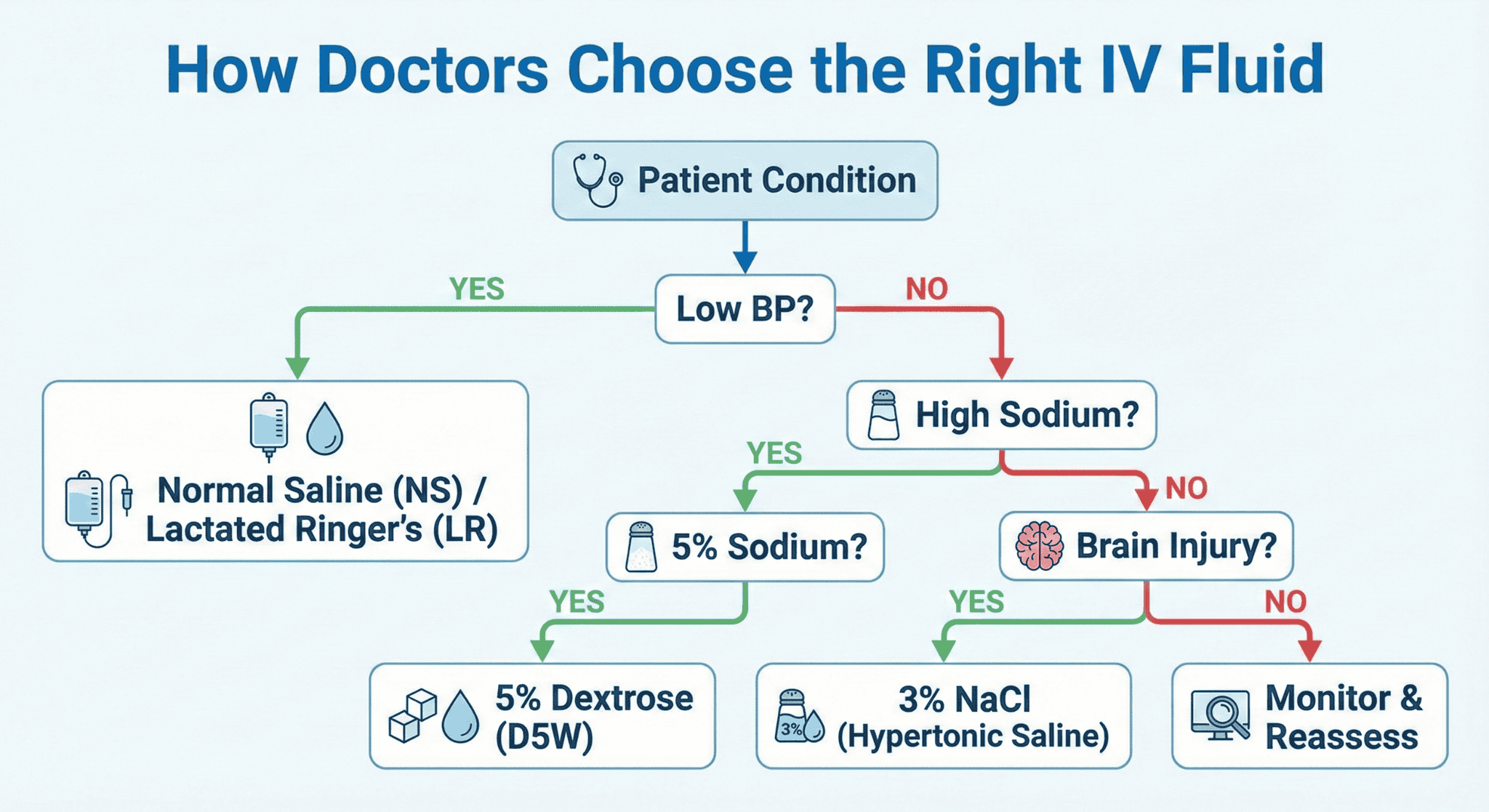
What Factors Influence the Selection of IV Fluid Types?
Fluid selection depends heavily on measurable clinical indicators that reveal how well blood is circulating. Each indicator reflects a specific physiologic concern and helps clinicians decide whether fluids will help.
| Indicator | Meaning | Implication for Fluids |
| BP <100 mmHg | Low perfusion pressure | Fluid resuscitation needed |
| HR >90 bpm | Compensatory tachycardia | Possible hypovolemia |
| Capillary refill >2 sec | Poor circulation | Suggests fluid deficit |
| Cold extremities | Vasoconstriction | Indicates reduced perfusion |
| RR >20 | Early shock compensation | Increased likelihood of fluid need |
| NEWS ≥5 | Clinical instability | Requires immediate evaluation |
| Passive leg raise response | Preload sensitivity | Predicts fluid responsiveness |
| Urine sodium <30 mmol/L | Sodium depletion | Suggests total body sodium deficit |
These warning signs guide the first choice between different types of fluids and determine both what type and how urgently you need treatment.
How Do Patient Conditions Dictate IV Fluid Choices?
What’s wrong with you totally dictates which IV fluids to pick because different diseases respond differently and have different complication risks. Brain injury patients actually did better with normal saline compared to balanced fluids. A big study called SAFE showed that albumin increased deaths in brain injury patients.
Serious infection patients showed a trend toward albumin being better than saline, though the numbers weren’t quite solid enough to be sure. Kidney problem patients risk dangerous potassium buildup from large volumes of Lactated Ringer’s or Plasma-Lyte. Diabetic patients might get sky-high blood sugar with dextrose-containing solutions.
| Condition | Fluid Risk | Recommended Choice |
| Traumatic Brain Injury | Higher mortality with balanced crystalloids | Normal saline |
| Severe Sepsis | Trend toward albumin benefit | Albumin or balanced crystalloids |
| Renal Dysfunction | Hyperkalemia risk | Avoid potassium-containing fluids |
| Diabetes | Hyperglycemia risk | Non-dextrose solutions |
| Cardiac/Hepatic Issues | Volume overload | Restricted volumes |
Understanding these condition-specific responses ensures optimal fluid selection and patient safety.
What Guidelines Do Healthcare Professionals Follow?
Healthcare professionals follow official guidelines recommending 25-30 mL/kg/day of water and about 1 mmol/kg/day of potassium, sodium, and chloride for maintenance therapy. You need 50-100 g/day of glucose to prevent your body from breaking down its own fat stores without meeting your full nutrition needs.
Monitoring protocols require daily check-ups of fluid status for everyone getting IV fluids. Lab values including kidney function tests and electrolytes need daily checking. Weight measurements should happen twice weekly to catch fluid buildup.
Specific no-nos include avoiding tetrastarch for fluid rescue per official guidelines. Human albumin solution 4%-5% only gets considered for severe sepsis rescue. Studies confirm that balanced fluids beat too much 0.9% NaCl in sepsis, burns, and diabetic emergencies, but not in brain injuries.
These evidence-backed guidelines standardize IV fluid picking while still allowing flexibility for individual patient needs and local protocols.
How Can The Drip IV Infusion Help You Understand and Benefit from Different IV Fluids?
The Drip IV Infusion specializes in delivering personalized IV fluid therapy that’s tailored to what your individual health needs. Understanding different IV fluid types helps you make smart choices about your hydration and wellness treatments. The following sections explore what The Drip IV Infusion offers and essential insights about IV fluid therapy that everyone should know.
What IV Fluid Services Does The Drip IV Infusion Offer?
The Drip IV Infusion offers comprehensive IV fluid therapy services designed to tackle all sorts of wellness and medical needs. Their services include hydration therapy using isotonic solutions for dehydration and fatigue recovery. The clinic provides vitamin-packed IV treatments that combine essential fluids with nutrients for immune support and energy boosting.
Athletic performance and recovery IV therapies use balanced fluids to restore electrolyte balance after intense workouts. The Drip IV Infusion also offers specialized hangover relief treatments and wellness maintenance programs. Their medical team checks out each patient’s hydration status and health goals to pick the optimal IV fluid type. All treatments get administered by licensed healthcare professionals in a comfortable clinical setting.

What Are the Essential Insights Everyone Should Know About Types of IV Fluids?
Several large-scale studies and global market reports highlight how IV fluids are used and how outcomes differ across solutions. These insights help contextualize why fluid selection matters so much:
- Global IV solutions market reached USD 13.9 billion in 2024
- ICU patients requiring IV fluids exceed 5 million annually in the U.S.
- Fluid use in ICUs: 6% emergency, 25% maintenance, 33% nutrition, 33% fluid creep
- TPN accounts for 66.3% of the IV market with USD 8.5B in revenue
- 90-day mortality: LR 20.3% vs normal saline 21.4%
- Albumin-treated groups required less volume than saline groups (1:1.4 ratio)
Understanding the different types of IV fluids helps patients and providers make safer, more informed decisions about hydration, resuscitation, and wellness therapy. As fluid research expands and clinical guidelines evolve, choosing the right fluid becomes essential for achieving the best possible health outcomes.



